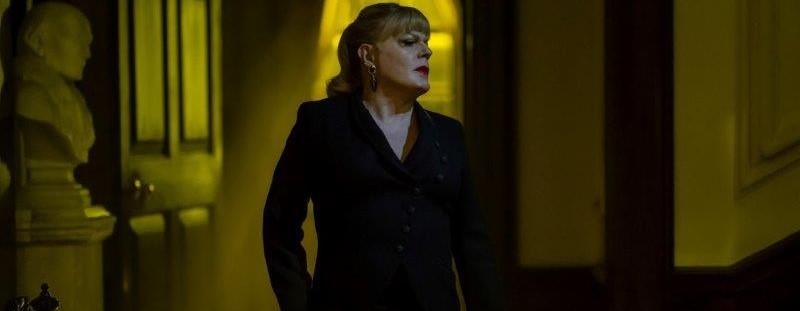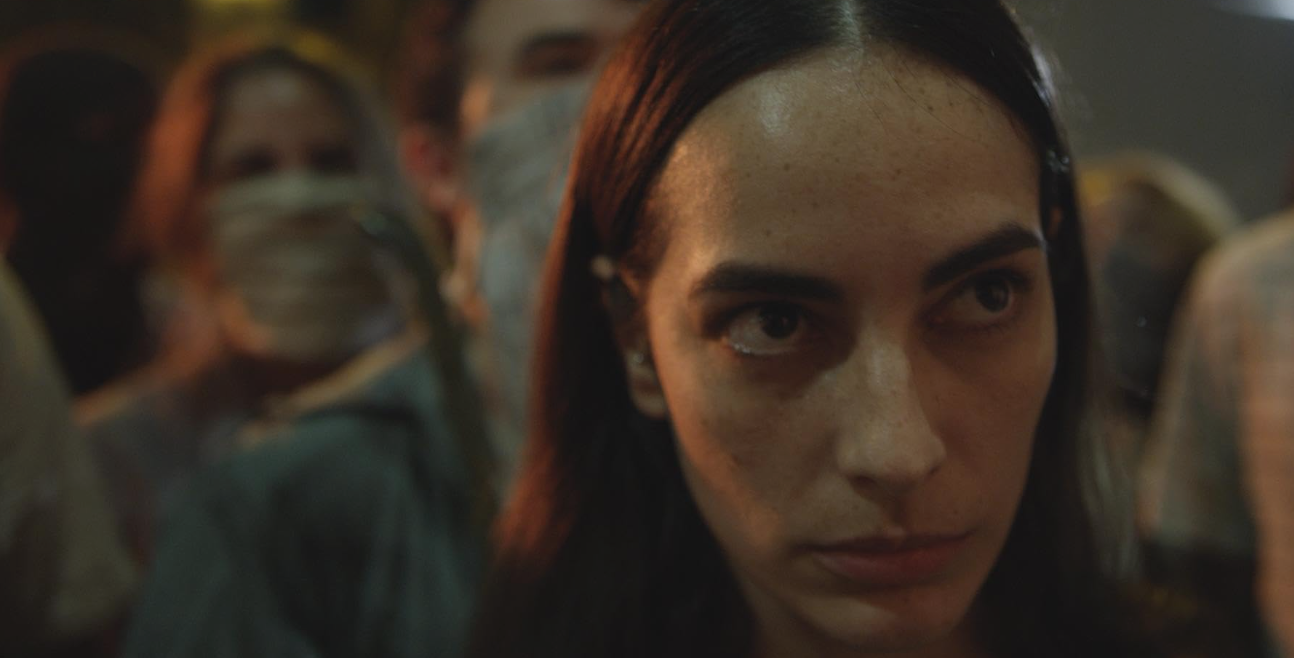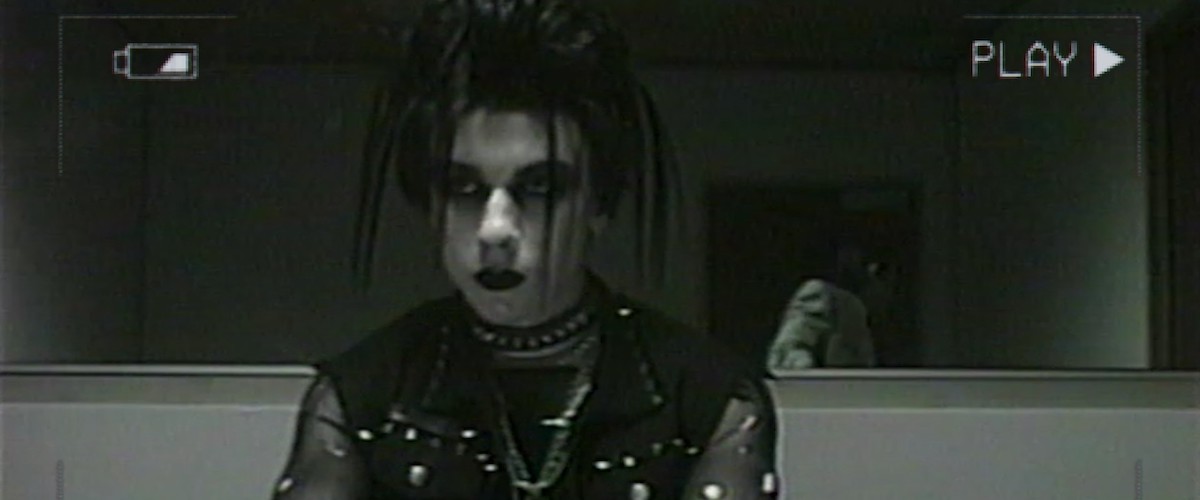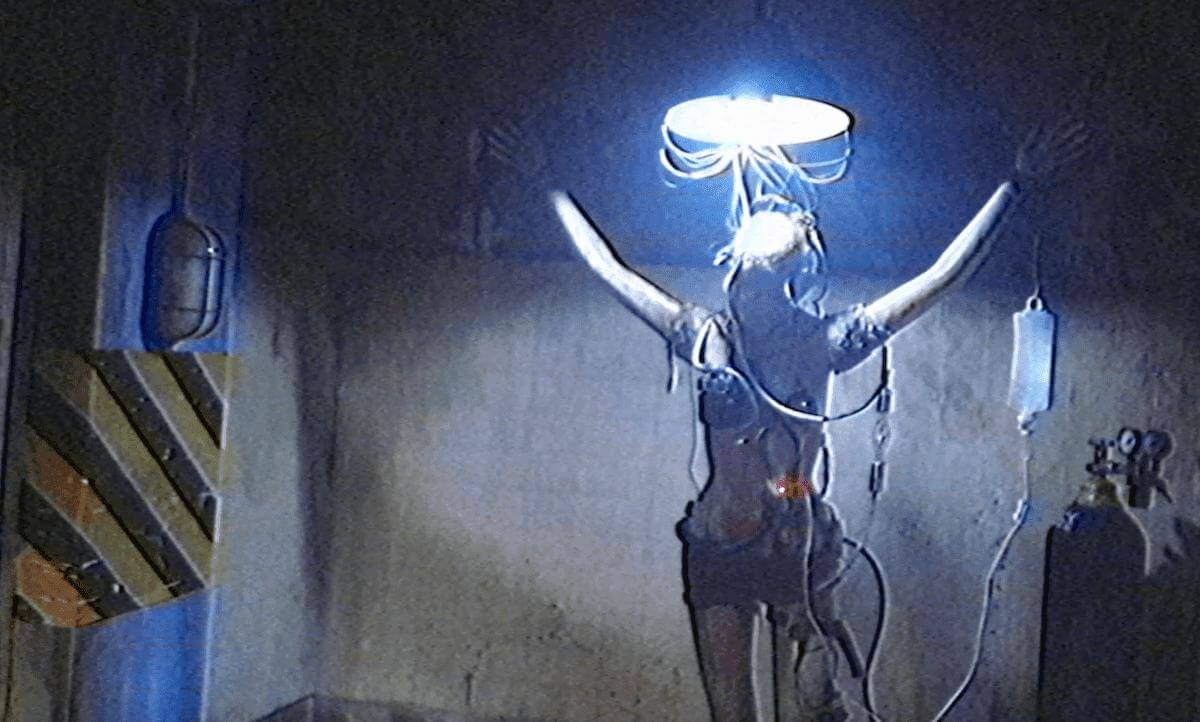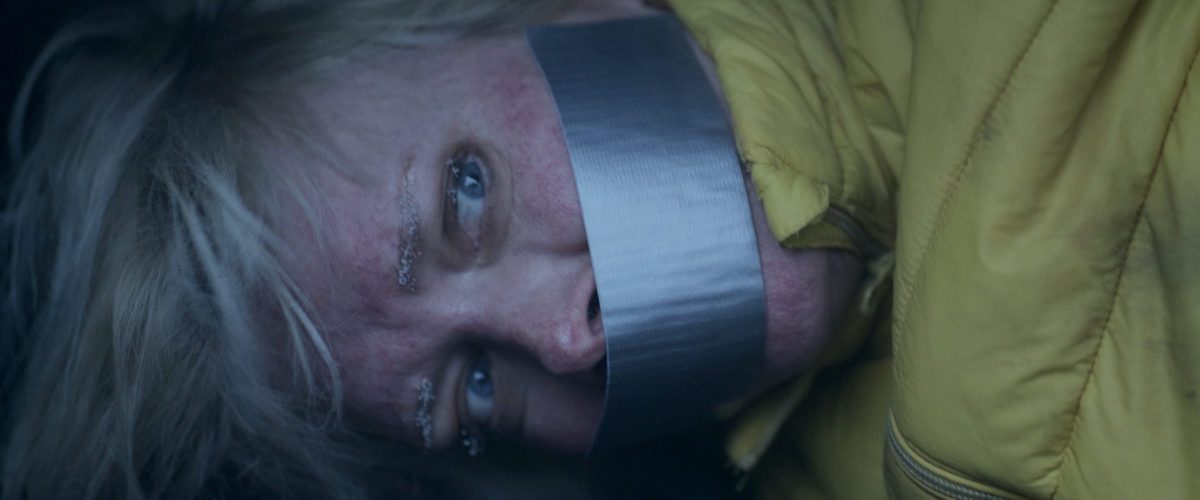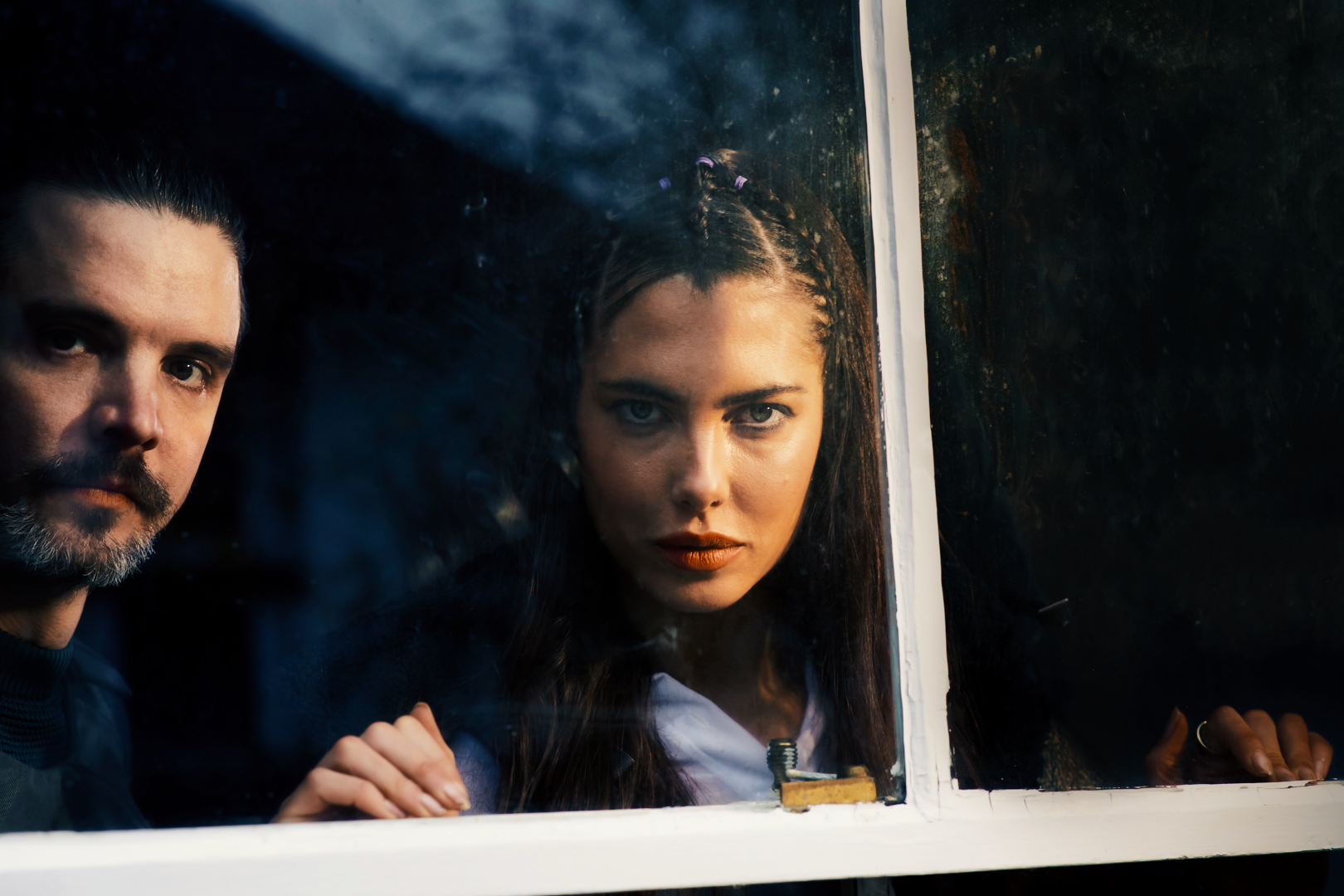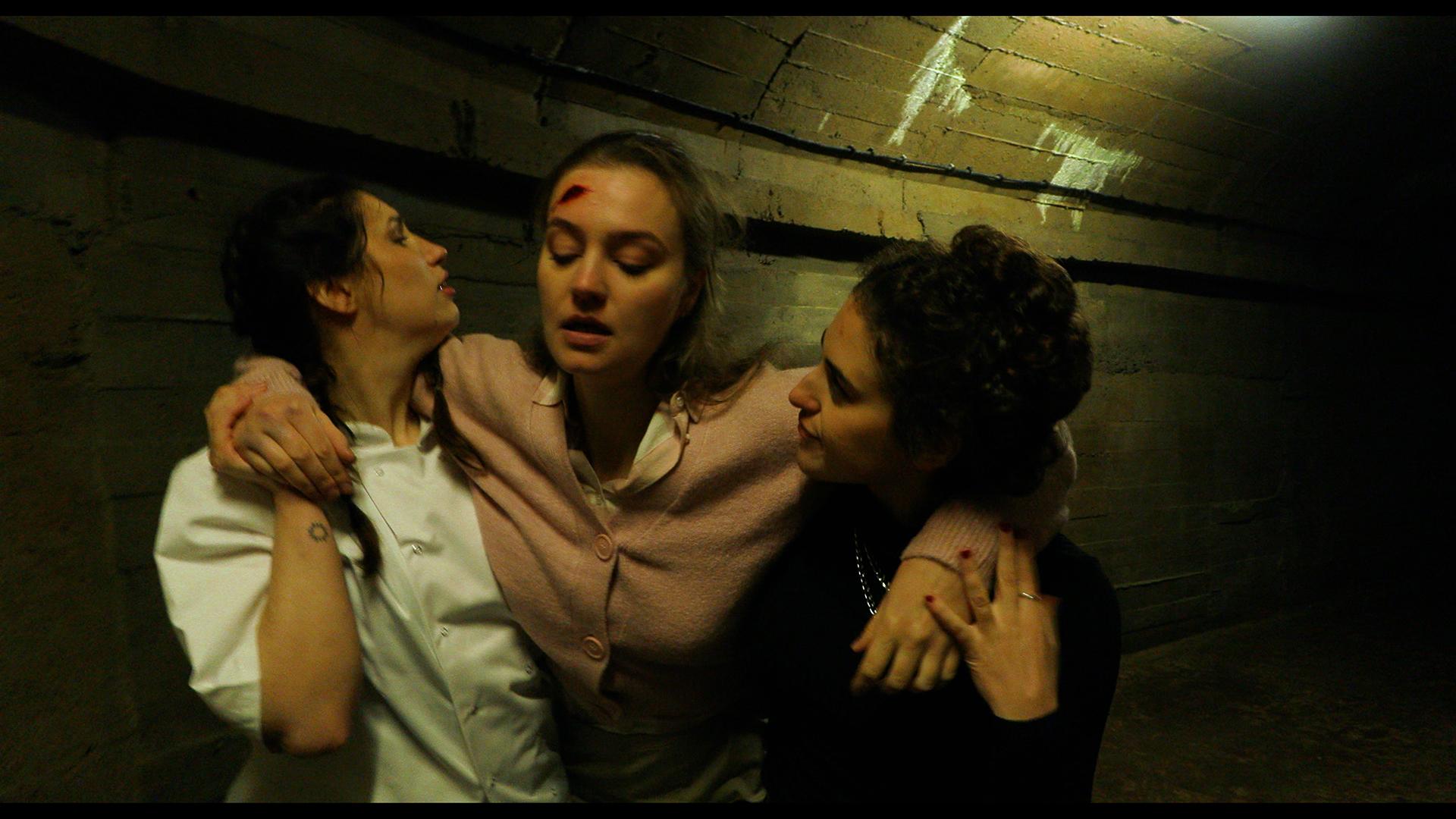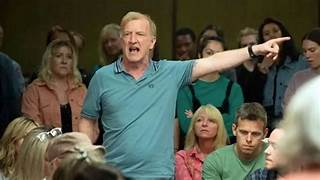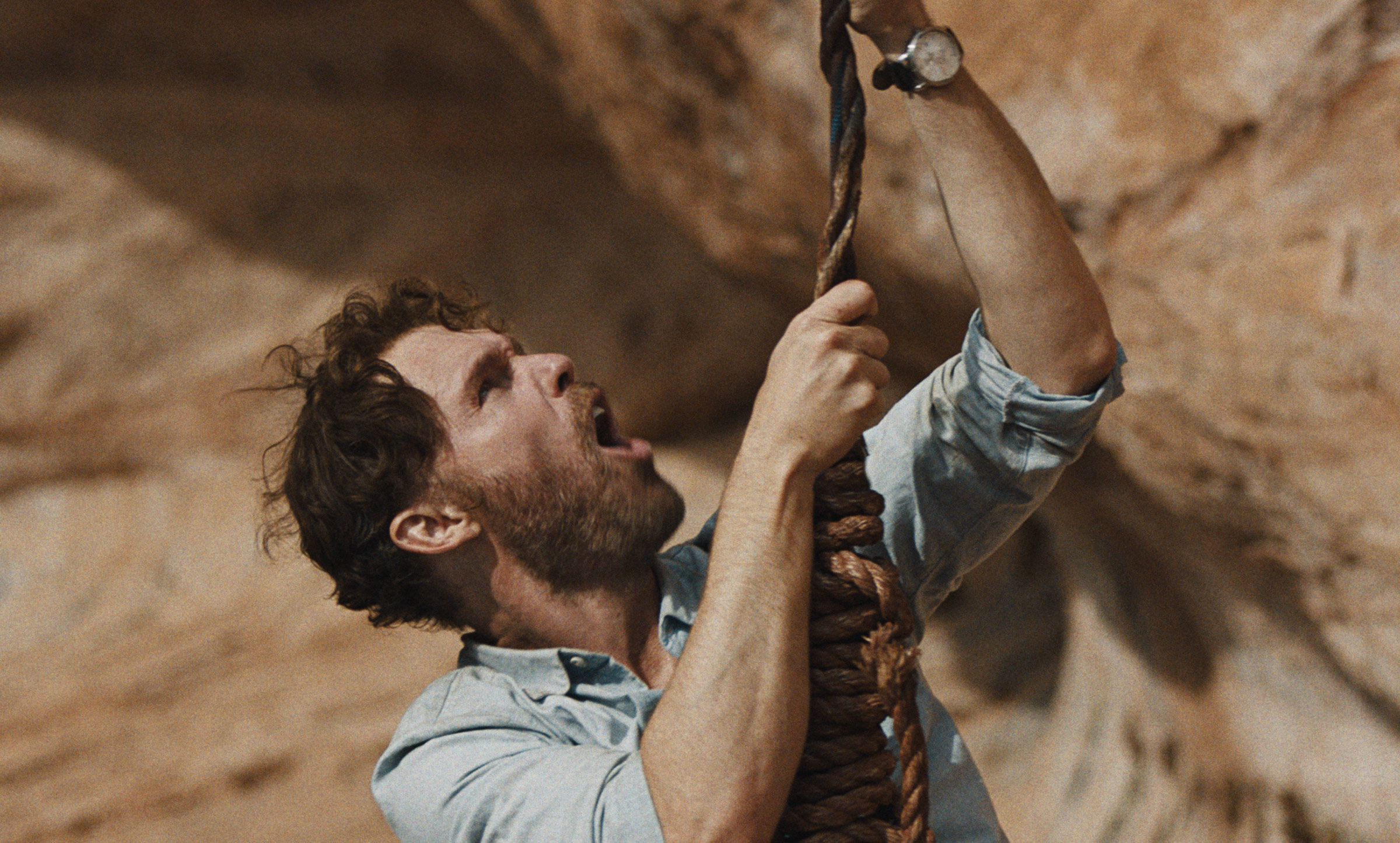The first film to be released under the new Hammer Productions mantle is an update of the classic Robert Louis Stevenson story starring comedian Eddie Izzard in the dual role. Those groaning that this will be another gender-flipped take on the story in the vein of the studio’s ‘70s movie Dr Jekyll and Sister Hyde will soon have those accusations quashed, however.
Izzard plays Nina Jekyll, head of a big pharma company, who has become a recluse following accusations of abusive behaviour. Rob (Scott Chambers), recently released from prison, takes a job as a helper at Jekyll’s sprawling mansion. He’s desperate to turn his life around to see his sick daughter, who was born while he was inside. Over the course of a few nights, he notices swings in Nina’s temperament. Unfortunately for Rob, his junkie ex has learnt of his wealthy employer and suggests a robbery…
Director Joe Stephenson and writer Dan Kelly-Mulhern take a different approach to Stevenson’s classic tale, with Jekyll’s meds keeping the sinister Rachel Hyde at bay. Izzard manages to infuse the latter with a brooding menace without the need for monstrous makeup, but both sides of the character are compelling viewing. The changes are subtle and very effective. Chambers plays a more comedic, naïve underdog whose heart is in the right place, although he’s been led astray with bad decisions.
Doctor Jekyll works well as a psychological thriller with great characterisations but features a few too many forced jump scares, which jolt from the mood rather than add to it. Interestingly, one of the major changes in the finished film from the version seen at FrightFest brings up a major flaw. In the opening set-up, we’re shown a newspaper headline revealing that Nina is trans, which wasn’t in the preview version. This becomes troublesome when we see a flashback of young Nina with her grandfather, Henry Jekyll. Of course, it could be a projection of how Nina saw herself, but the addition of that bit of information feels forced and unnecessary as Izzard’s portrayal is so mesmerising it’s really redundant.
While the film wasn’t originally made under the Hammer banner, it’s a good picture for the company to make its official comeback under the new management. Doctor Jekyll is lower-key than one would expect but works all the better because of that.

DOCTOR JEKYLL is out now on digital platforms in the UK.

